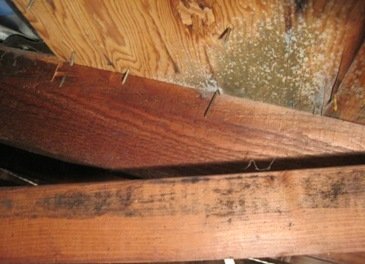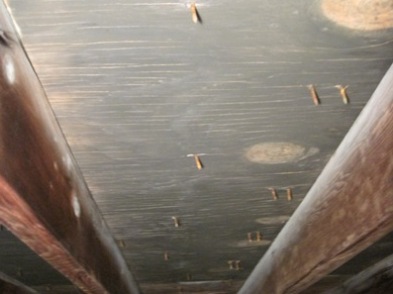Find a Mold Specialist Now
Click or Call, Toll-Free 24/7
How To Prevent Attic Mold
It’s far better to prevent attic mold than to have to treat your attic for mold, although of course sometimes your best efforts at mold prevention are not enough. We cannot overemphasize the importance of mold prevention and we will give you some steps to take to prevent mold in your attic. We’ll also tell you about your options for attic mold treatment in the event that mold does develop in your attic. Addressing any mold that begins to grow promptly can save you a lot of time and money in the long run.
Tips to Prevent Attic Mold
They say an ounce of prevention is worth a pound of cure and that is certainly the case when it comes to mold in your attic. By spending a little time and money on prevention, you can save yourself a lot of time and money, not to mention aggravation, dealing with mold in the future. Here are a few tips to help you prevent mold in your attic.
- Make sure your attic is properly insulated. In addition to helping prevent mold by preventing condensation, this will save you money on your home heating and cooling costs.
- Make sure your attic is properly ventilated. There should be vents in your roof to allow airflow but if needed, you can install a fan in the attic to improve ventilation. A properly ventilated attic will also reduce home cooling costs and increase the lifespan of your shingles.
- Keep your roof in good repair. Allstate Insurance recommends inspecting your roof – or better yet, having it inspected by a professional – annually and making any necessary repairs right away. You should also inspect your roof after severe weather, including heavy snow or wind. Of course, any needed repairs should be made right away. You can learn more about roof leaks and keeping your roof in good repair here.
- Inspect your attic for mold annually, too. Most people don’t spend much time in their attics, so mold can grow there unnoticed for quite a while. When it’s time to inspect your roof, take a little extra time to inspect the attic, too.
- If you do find mold in your attic, deal with it right away. Most strains of mold grow rapidly so every day you delay, the problem will only get worse. You can prevent attic mold from worsening and possibly spreading to other areas of your home by taking care of it promptly.
 |
 |
Attic Mold Treatment
If, despite your best efforts to prevent it, mold does develop in your attic, it’s important to address the situation as soon as possible. Depending on the extent of the mold and other factors, you may need to call in a professional for assistance.
Keep in mind the fact that mold will only grow in your attic if there is excessive moisture, most often related to a leak in the roof, but sometimes due to other causes. It is imperative that you find and fix the problem causing the excessive moisture before treating your attic for mold, otherwise the mold will just come back again. This needs to be the first step you take.
Make sure you wear the appropriate protective gear when removing mold from your attic. You’ll need an N-95 or N-99 face mask, disposable gloves, and hair and shoe covers. You can read more about protective clothing for mold removal.
If there is mold in the insulation in your attic, the insulation will need to be removed and replaced. It is not possible to clean moldy insulation. Insulation should be sealed in sturdy plastic bags before it is carried through the house for disposal so that you don’t inadvertently spread mold to other areas of the home.
Mold in attics is often found on wooden surfaces. Because wood is rather porous, it is difficult to remove mold from the wood. Sometimes it can be removed by cleaning it with a fungicide and a wire brush or by sanding it. It is not recommended that homeowners sand moldy wood themselves because the process stirs up hundreds of thousands of mold spores that can cause illness if inhaled. To be safe, we recommend hiring a professional if you have moldy wood that needs to be sanded in order to remove the mold.
In some situations you can encapsulate any remaining mold in the wood by applying a special sealant. Note that you should never paint over mold because mold will continue to grow under the paint, and the paint will probably eventually peel off. Even mold-resistant paint won’t kill existing mold.
Professionals have other techniques at their disposable, including dry ice blasting, also called cryogenic blasting or CO2 blasting (because dry ice is frozen carbon dioxide). This procedure involves sending a pressurized airstream of particles of dry ice onto a moldy surface, blasting away the mold. You need to hire a professional for this because of the specialized equipment needed and because it can be dangerous if not done correctly. It would be overkill for a small area of mold but if you’ve got mold covering a large area in your attic, it can be both an effective and efficient way to deal with it.
For More Information and Assistance
To learn more about your options for mold treatment in your attic, you can schedule a free consultation with an experienced mold removal professional in the convenience of your own home. Even if you plan to do the work yourself, you can benefit from some expert advice on the subject. Be sure to discuss safety precautions that should be taken during the mold removal process. Also ask about steps you can take to prevent attic mold in the future. Follow this link to find qualified mold removal professionals offering free in-home consultations in your area.
Return From How To Prevent Attic Mold To Our Main Prevention Page
Ref:
EPA - Basic mold cleanup steps
Privacy Policy Terms and Conditions Accessibility Do Not Sell My Information Disclaimer Contact Us




